This sourdough sandwich bread recipe makes an amazingly super-soft bread that kids absolutely love. Once you make this easy no-knead sourdough bread recipe, buying it from the store will be a thing of the past!
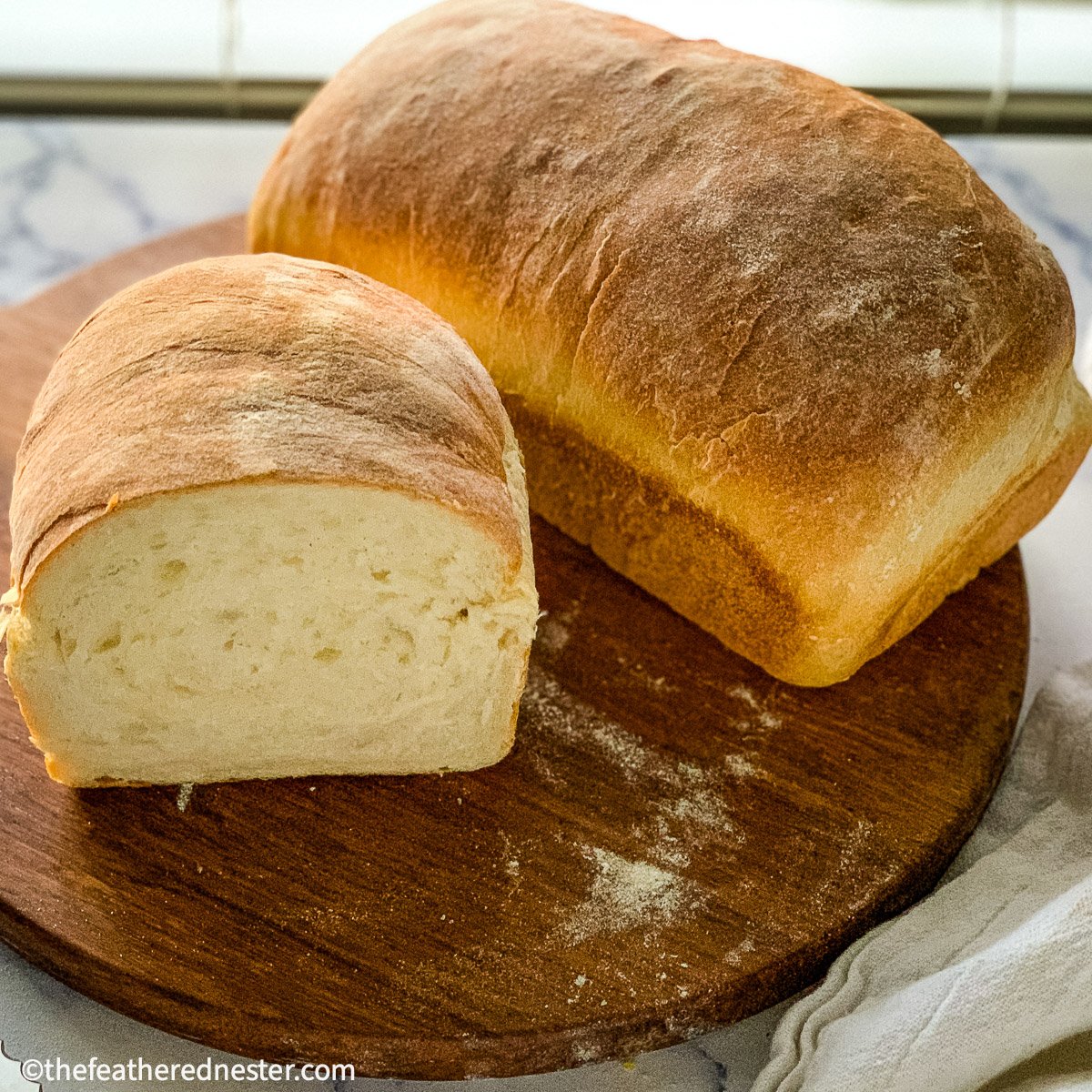
Content Covered Here
Why We Love This Recipe
- It’s super soft inside and out – so everyone loves it!
Sourdough loaves typically have a crunchy, chewy exterior that some people (and kids) dislike. However, this recipe is baked in a loaf pan for a wonderfully light crust and soft interior. - There is no kneading required!
Since this is a no-knead bread recipe, there’s no worry about “Have I kneaded the dough enough?” The recipe is literally fail-proof. - It tastes like “regular” sandwich bread – without the “sour” taste.
Even if your kids aren’t sourdough fans, they’ll love it! They probably won’t even notice the difference between it and store-bought. The kids might also like our grilled cheese on sourdough bread recipe.
Learn more about how sourdough is fermented in my overnight sourdough bread post.
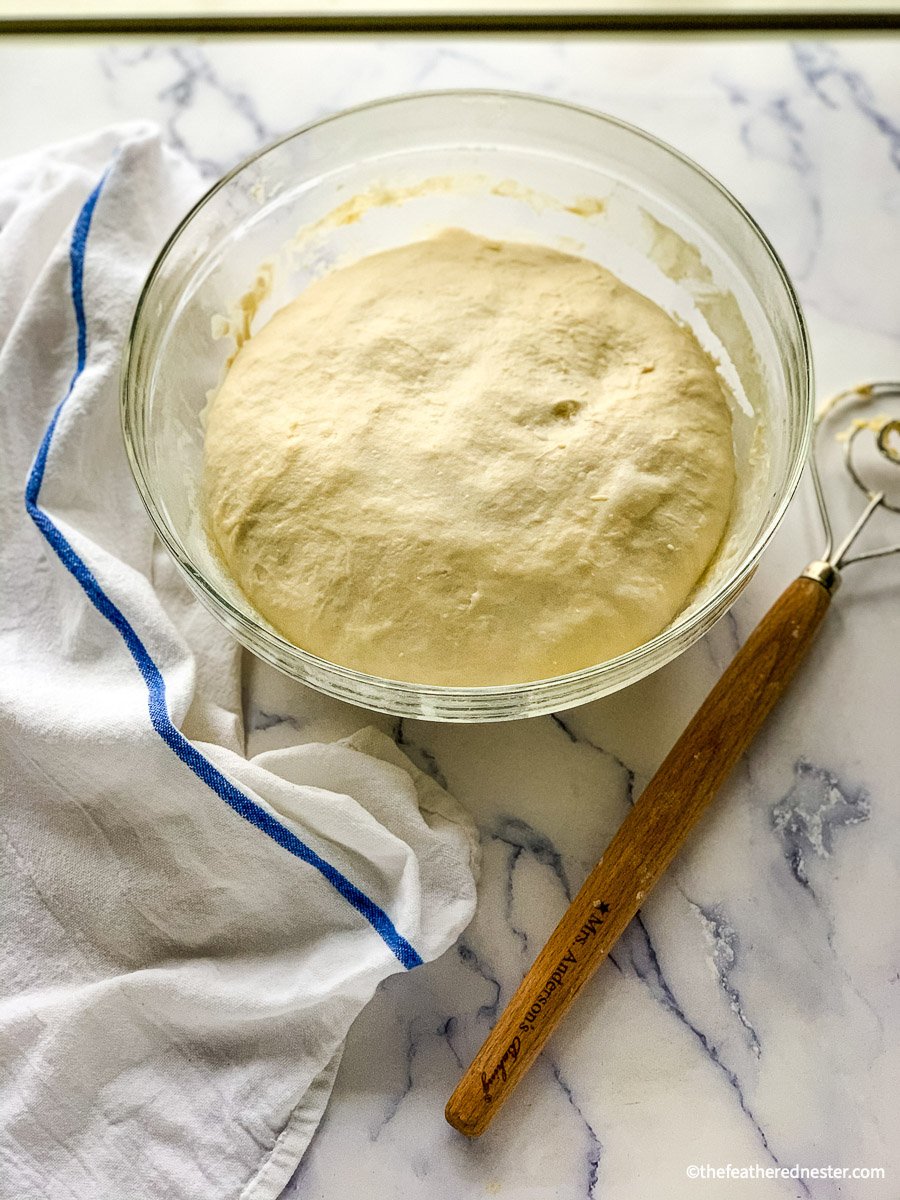
Ingredient Notes & Substitutions
Make this yummy soft loaf with just a handful of simple ingredients. As I mentioned, there’s no yeast, eggs, or milk required!
- Sourdough starter – active and bubbly and fed 12-24 hours before starting the recipe.
- Bread flour – I prefer using King Arthur flour that’s unbleached. You can also use organic flour, too!
- Sugar – either granulated sugar. You can substitute the sugar with 2 rounded tablespoons of honey.
Do you lack a sourdough starter? My quick and easy sourdough starter recipe can make a fast starter in just five days. You can also make a loaf of our classic sandwich bread or whole wheat sandwich bread recipe, which uses yeast instead.
Here are my favorite sourdough tools for this recipe
 Buy Now →
Buy Now →  Buy Now →
Buy Now → How to Make Sourdough Loaf Bread
This sourdough bread recipe requires just a few basic steps. Spoiler alert: the overnight rise makes a soft sandwich loaf that’s far better than anything you’ll find at the grocery store.
Start the recipe on a relaxing Saturday or Sunday evening, and then bake the next day. It will be ready to slice and stack with your favorite sandwich ingredients during the week.
🎯 TFN Pro Tip
I recommend using a clear glass mixing bowl. This allows you to see the activity on the dough’s top and bottom. Often, the bottom of the dough will show a lot of activity, reassuring you that it’s properly fermented.
Follow these easy steps:
- Feed your starter 12-24 hours before starting the recipe.
- In a medium bowl, combine the starter with warm water, and then add flour, sugar, oil, and salt. I like using a dough whisk for mixing. Mix well to form a shaggy, sticky dough.
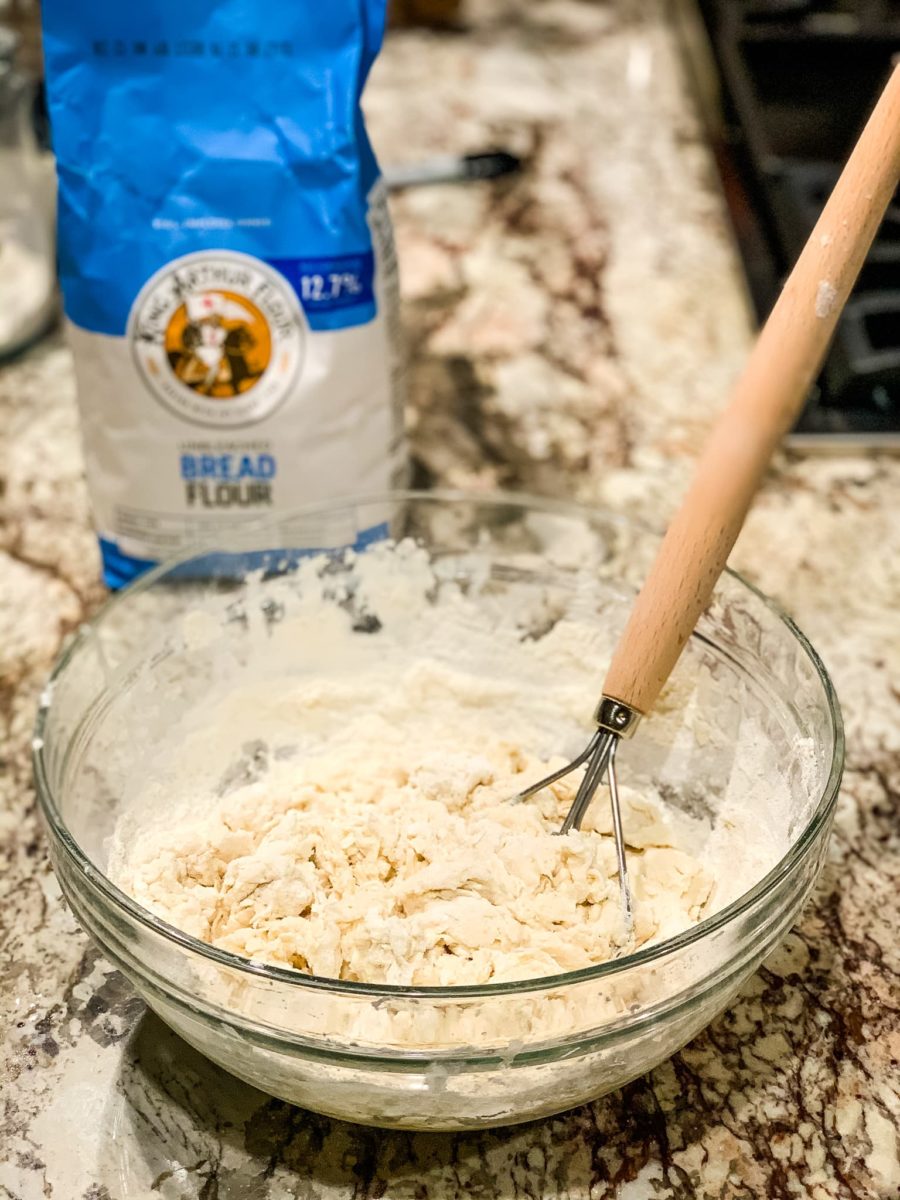
- Flour or wet your clean hands and use them to mix the dough. Then, cover the bowl with a damp towel and allow it to rise for 30-45 minutes.
- Coax the dough from the bowl, place it on a clean and lightly floured surface, then stretch and fold it a few times.
Recover with a damp towel, and now allow the sourdough to rise at room temperature overnight, approximately 8-10 hours.
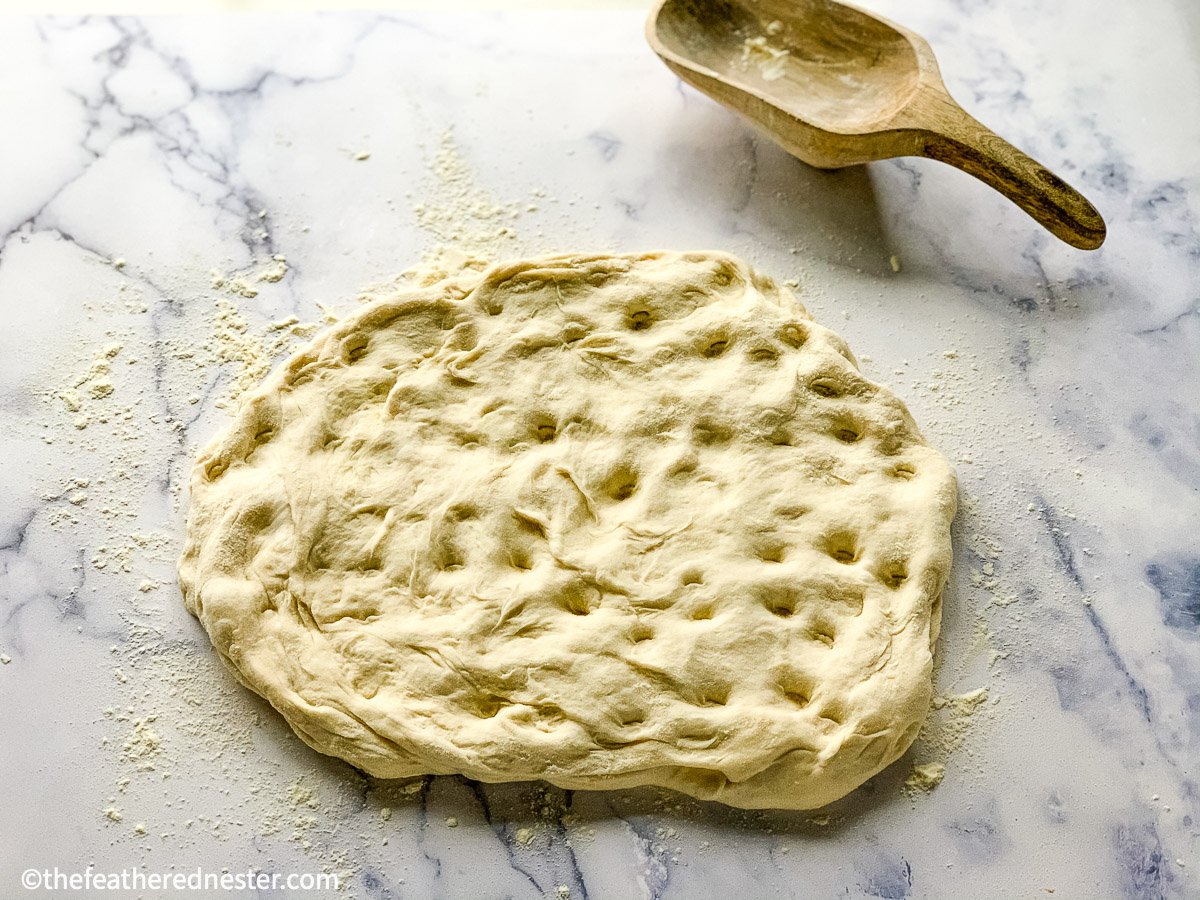
- In the morning, lightly flour your countertop. Remove the dough from the bowl and roll up the dough into a log shape (as shown below). Cover with a damp towel and let the dough rest for about 10 minutes.
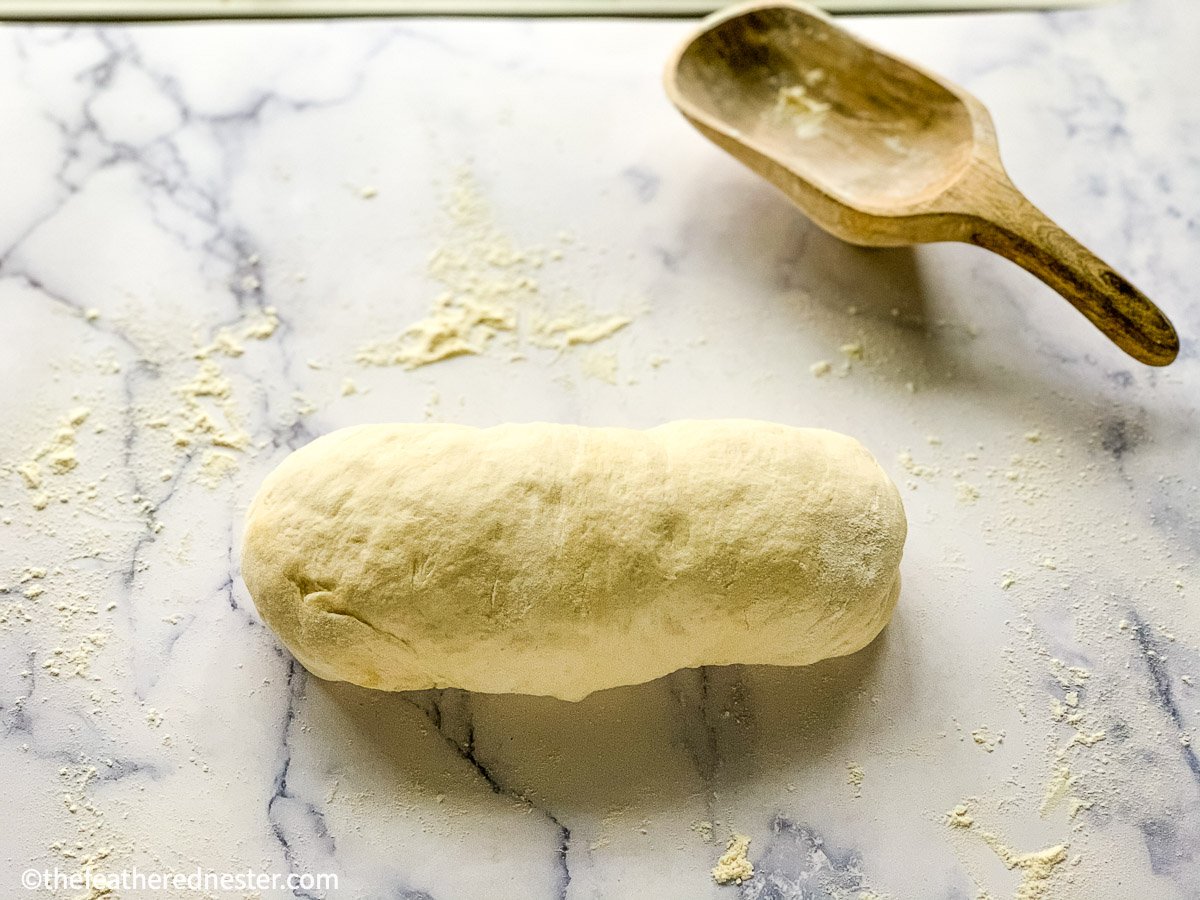
Baking Instructions
- Lightly spray a 9” x 5” loaf pan with nonstick spray. Then tighten the loaf by gently rolling and pulling the dough, and transfer it to the prepared loaf pan seam side down.
Cover with a towel and let the loaf rise for another hour or two.
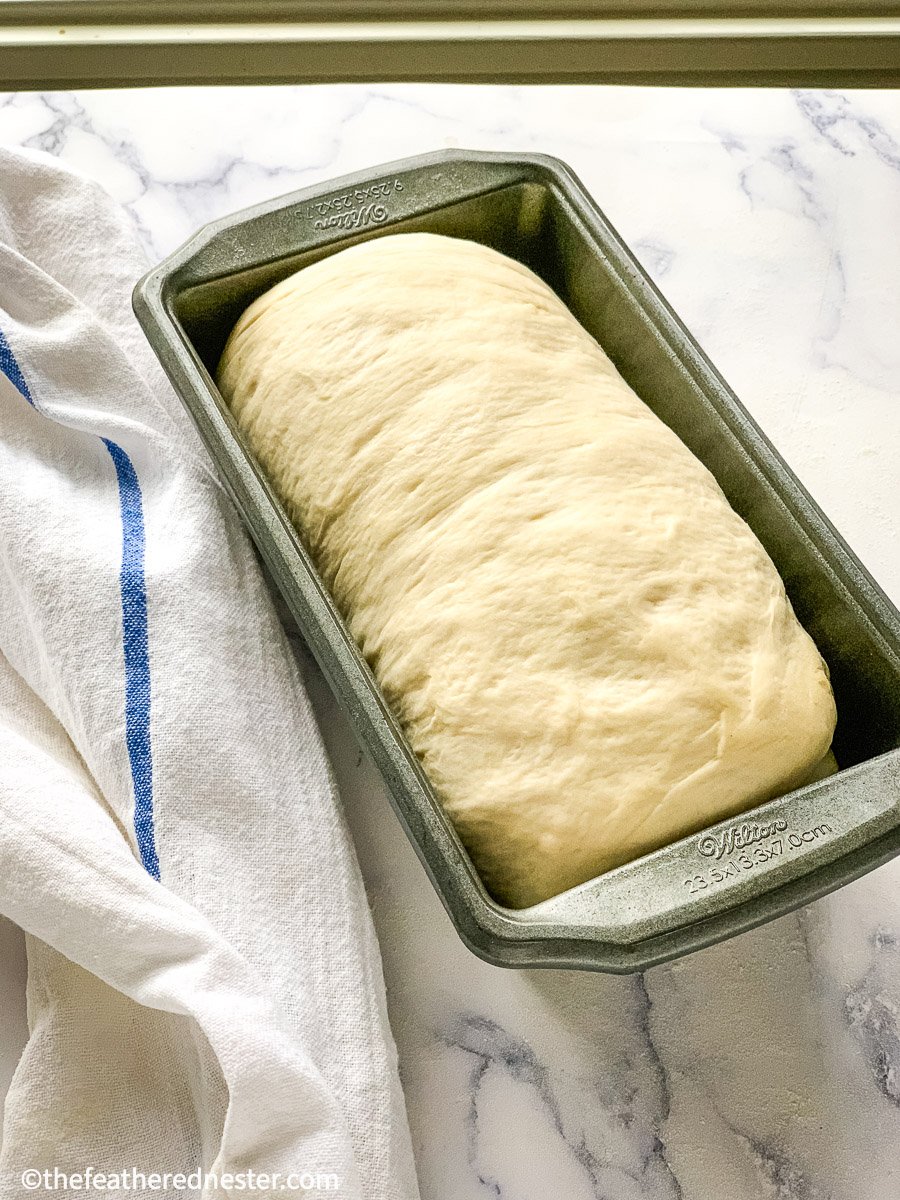
- When you’re ready to bake your loaf, preheat the oven to 375ºF. Then bake for 40 minutes, until the crust is a lovely golden brown color.
Remove the pan from the oven and allow it to rest for 10 minutes before carefully tipping it out of the pan onto a cooling rack.
Let the sourdough cool for at least one hour before storing it whole or sliced and enjoyed.
Recipe FAQs
Yes, you can use all-purpose flour instead of bread flour, using the same amount of flour.
The dough needs a warm area for the bulk (overnight) fermented rise. Find a warm place (75º – 85º F) like an oven with the light on, a warm window, or above the dryer to set the bread for 2 more hours.
When the baking time is up, I check to see if the top of the loaf is golden and it sounds hollow when tapped on. If you are unsure, check the internal temperature which should be around 195º – 200ºF.
If stored in a plastic bag at room temperature, it will stay fresh for up to 5 days. For the softest crust, we recommend leaving it out of the fridge. However, you can seal it in an airtight plastic bag and keep it in the freezer for up to 3 months.
Allow them to defrost at room temperature before slicing and using.
For more storage tips, see how to store sourdough bread.
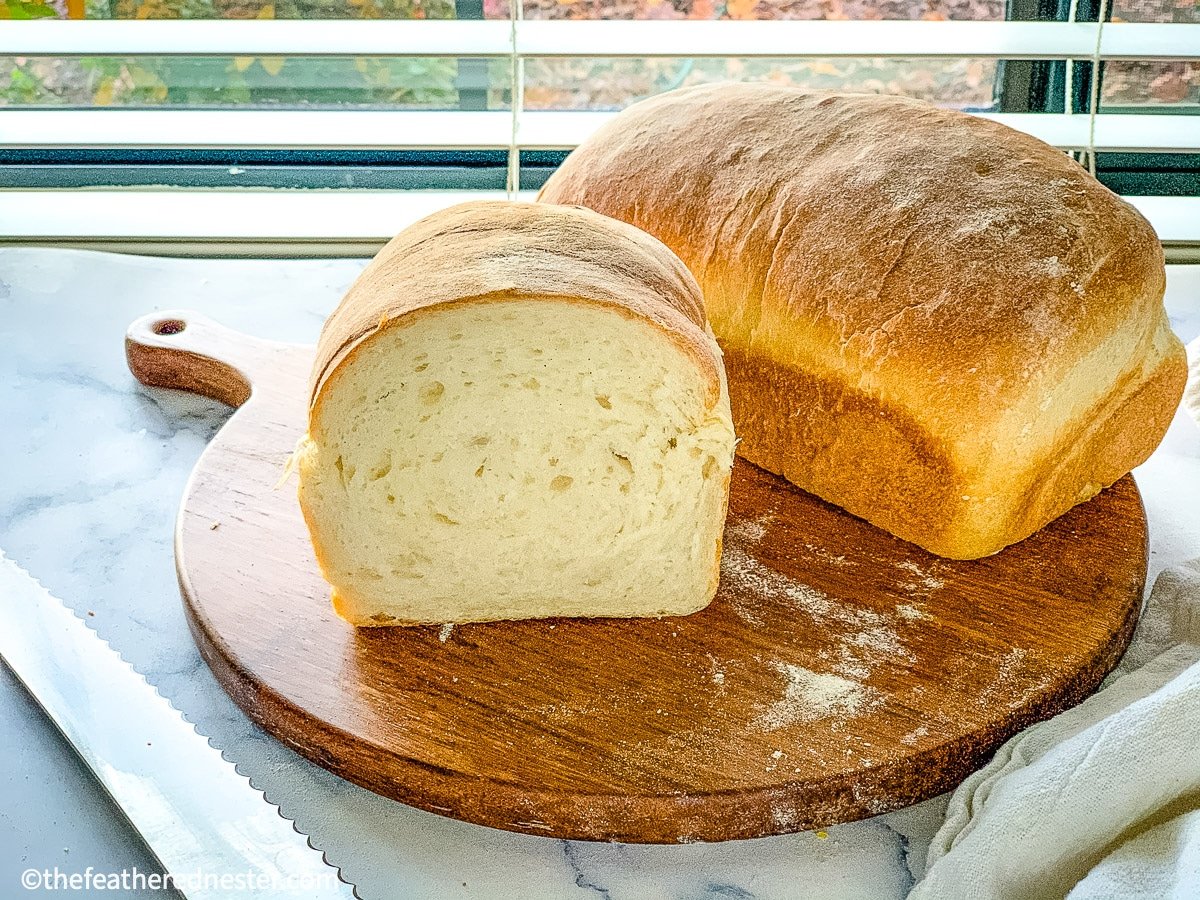
More Easy Sourdough Recipes…
- Double Chocolate Sourdough Bread
- Jalapeno Cheddar Sourdough Bread
- Sourdough Bread Bowls Recipe
- Sourdough Garlic Toast
If you tried this sourdough recipe or any other recipe on my website, please leave a 🌟 star rating and let me know how it went in the 📝 comments below. Thanks for visiting!
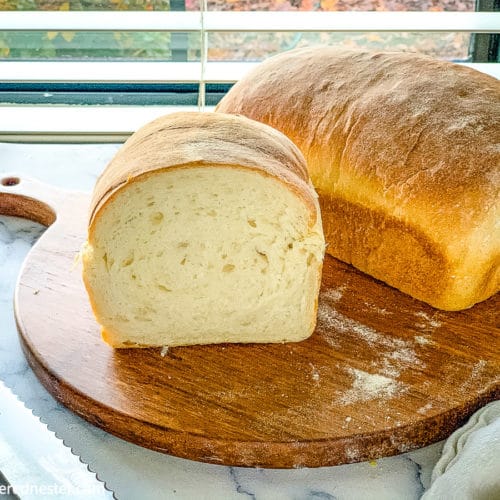
Sourdough No Knead Sandwich Bread
Equipment
- Loaf pan, 9" x 5" - See notes for a 12' x 4.5" pan
Ingredients
- ⅓ cup (65 grams) sourdough starter, bubbly and active fed within 12-24 hours
- 1⅓ cups (300 grams) warm water, filtered 95º to 100º F
- ¼ cup (56 grams) granulated sugar can substitute with 2 rounded tablespoons of honey
- 3½ -4 cups (500 grams) bread flour or all-purpose flour. I recommend weighing your flour, see notes for using measuring cups
- 1½ tablespoons (20 grams) extra-virgin olive oil
- 2 teaspoons (9 grams) salt
Instructions
- Add the starter to a large bowl. Mix in warm water and sugar, stirring until dissolved. Add flour, oil, and salt. Stir with a dough whisk or wooden spoon until a thick, shaggy dough forms.
- Flour your hands or wet your hands, and finish mixing dough by hand until most of the flour has been absorbed. Don't worry if there is flour on the sides or bottom of the bowl. Cover with a clean, damp kitchen towel and let the dough rest for 30 to 45 minutes.
- Coax the dough from the bowl and stretch and fold the dough by stretching 4 inches then pushing it down the middle and turning 1/4 until you make a circle (see video below for how to do this).Return the dough to the bowl, cover with a damp towel, and let rise at room temperature overnight (at least 8-10 hours) until double in size. Do not refrigerate dough.
- In the morning, lightly flour your counter top. Remove the dough from the bowl, gently stretching it into a rectangle, then your fingers to dimple the rough to release the air from the dough (as shown in photo). Roll up dough into a log shape. Cover and let the dough rest 10 minutes.
- Spray loaf pan with cooking spray. Tighten the dough log by gently pulling it towards you along the countertop for 5-8". Place it in your loaf pan, seam side down. Cover and let rise for 1-2 hours, until the dough is about double in size.Press the corner edge of the dough in 1/2" and if the indentation remains, it's ready to bake.
- Preheat your oven to 375ºF.
- Bake in the center of the oven for 40 minutes. The top of the loaf should be golden in color. Remove from oven.After 10 minutes, tilt the pan to remove the bread to cool on a cooling rack.
- Wait at least 1 hour before cutting (to prevent the loaf from deflating).
Video

Notes
The recipe ingredients call for 3 1/2 to 4 cups of flour because cup measuring is less reliable than using a food scale to weigh the flour. Be sure to stir the flour, then use a spoon to add it into the measuring cup, and level it with a knife. Start with the lower amount of flour and add up to 4 cups, but only if needed. Troubleshooting (Updated 6/26/2023) If your bread “blows out on one side,” we recommend using a larger loaf pan, 12″ x 4.5″ in size, or a 1.5-pound bread pan. Then bake at 375ºF for 30 minutes.
Allow the bread to defrost at room temperature before slicing and using.





Angela says
Can you substitute some whole wheat flour?
Renae says
I have used 1/4 whole wheat successfully in this recipe. Let me know how it turns out for you!
Margaret says
I NEVER comment on websites or other social media so the fact that I’m leaving a comment here says something. This bread is fantastic and is exactly the recipe I have been looking for. I wanted an overnight sourdough sandwich bread that doesn’t need any fancy bowls or baking vessels. This is it! It’s so soft and still has those sourdough pockets of air inside and out. I accidentally used all-purpose flour and was worried how it would turn out but it rose beautifully. My house is on the cool side so both the bulk rise and morning rise took a little longer but it was worth it. I’ve fed my starter so I can bake more. Thank you!
Renae says
My house is on the cooler side in the winter and I have been letting it rise longer, as well. I’m so happy to hear that you love the recipe as much as we do!
Jessica says
I just bought vital gluten to make this- my son has severe allergies and this is one of the first recipes that doesn’t use eggs or milk- hooray! What size loaf pan do you use?
Renae says
I’m so glad you’ve found a recipe for your son! I use a 9′ x 5″ pan, I believe it’s linked in the post. Anything close to that size should work perfectly.
Kristen says
Made this loaf in a deep storage pyrex dish (not an actual loaf pan) that was 8″ x 6″ and it turned out perfect! I tend to like wider sandwich bread though.
T.W. Woods says
Looks delicious and easy enough for a first time bread maker!
Renae says
It is definitely the perfect recipe for a beginner!
Teja says
Hi, just tried your bread recipe. However my loaves taste too sour and vinegary. I left it to proof at the counter (hot tropical weather) for approx. 7-8 hours before baking. Is it normal or has my bread failed?
Renae says
The sourness and vinegary tastes usually come from the starter. Typically, a starter fed less often becomes more acidic, and bread dough made from it will taste more like what you describe. I have left my sourdough sandwich bread dough out at 78ºF to 80ºF in the summer overnight without any problem. Since this recipe is for sandwich bread, we have added sweetener to balance the flavor.
Dirose says
So excited to try this! Thank you for another great recipe!
Renae says
We are so in love with this bread! I’ve been making it weekly. It keeps really well at room temperature.